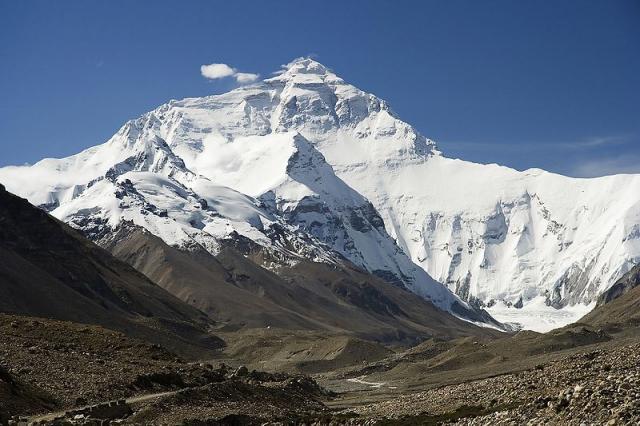Remember the Himalayan glaciers?
They were at the root of the most deserved black-eye to the U.N. Intergovernmental Panel on Climate Change during the intensely politicized period of 2009-2010. In so-called “GlacierGate,” it was revealed that the IPCC had published, in one of its reports, a truly bogus assertion that the Himalayan glaciers would be gone by the year 2035. As I reported at the time:
Not only is this business about 2035 an exceedingly dubious assertion, but part of the error seems traceable to a simple typo—an original source made predictions for the year 2350, not 2035. When doubts were raised about the passage, however, the IPCC failed to respond either quickly or well. IPCC chair Rajendra Pachauri even reportedly referred to a November Indian government report that questioned the IPCC’s findings about the glaciers’ vulnerability as “voodoo science.” Actually, the voodoo was all the IPCC’s, but the U.N. body only acknowledged its error several months after questions were first raised in the Indian report. “In drafting the paragraph in question, the clear and well-established standards of evidence, required by the IPCC procedures, were not applied properly,” the IPCC coughed out on January 20.
Climate skeptics and deniers of course seized on “GlacierGate” to try to discredit the IPCC. In reality, while the group did indeed make an error, a little perspective is required–this is one mistake in a vast 938 page report! What would be truly amazing would be for the IPCC not to make any mistakes when dealing with such a vast volume of scientific material.
And anyways, while the IPCC did itself no credit with how it handled “GlacierGate,” the fact remains that the error was acknowledged, period. The story is over.
In fact—and most important—most Himalayan glaciers are indeed retreating in a manner consistent with climate change (although certainly not at a rate suggesting they’ll be gone by 2035).
Still, a comprehensive new study in Nature Climate Change (news report here) proves that glacial retreat is indeed underway. This a very big deal, of course, because the Tibetan plateau and the mountains surrounding it–a region containing so much ice that it is often called the “Third Pole”–feed huge river bodies like the Indus, upon which a staggering number of people depend.
As usual, the new study shows that the global warming trend affecting the region’s glaciers is superimposed atop regional climate variability. Or as the paper puts it:
Here we report on the glacier status over the past 30 years by investigating the glacial retreat of 82 glaciers, area reduction of 7,090 glaciers and mass-balance change of 15 glaciers. Systematic differences in glacier status are apparent from region to region, with the most intensive shrinkage in the Himalayas (excluding the Karakorum) characterized by the greatest reduction in glacial length and area and the most negative mass balance. The shrinkage generally decreases from the Himalayas to the continental interior and is the least in the eastern Pamir, characterized by the least glacial retreat, area reduction and positive mass balance. In addition to rising temperature, decreased precipitation in the Himalayas and increasing precipitation in the eastern Pamir accompanied by different atmospheric circulation patterns is probably driving these systematic differences.
Deniers may try to nitpick about the details here, as the glacial retreat isn’t uniform across the Third Pole, and in some places glaciers are even increasing. But, of course, that would be missing the point. Nobody ever said to expect uniformity in how the world responds to climate change. Rather, scientists told us to expect predictions to be borne out by real world data–and once again, they are.
Moreover, let’s think back to 2009-2010. We now know that “ClimateGate” was a trumped up scandal, based on little more than misreading a few emails. And as for “GlacierGate”: Well, here there was actually some substance. There was indeed a real IPCC mistake.
But that doesn’t detract from the big picture: Himalayan glaciers are retreating, and the cost to the region could be severe.
Can somebody remind me again what else the “skeptics” have to cling to? I’m sure it’s something.
Subscribe to our newsletter
Stay up to date with DeSmog news and alerts






